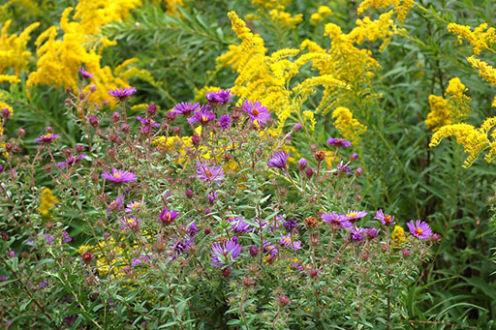Today’s post is shared by upcoming presenter Sr. Chris Koellhoffer, IHM. We are excited to be able to host her in 2022 for a Lenten retreat. Her blog ‘Mining the Now: Uncovering the Sacred in the Dailiness of Life’ features many inspiring reflections from nature like this. As the seasons are changing and we’re noticing God’s brushstrokes in the fall colors we thought you would enjoy reading this reflection about lessons from nature.
The Expectations of Beauty
Let’s hear it for words that open doors, invite exploration, encourage daydreaming. Let’s savor questions that send us down the rabbit hole to be transported into new, unexpected, and transformative ways of knowing. Let’s linger with phrases like “Why?” and “What if?” and “I wonder…” Let’s applaud parents, teachers, mentors, caregivers, friends, and so many others who have liberated our curiosity and imagination by encouragi ng our use of the question mark.
ng our use of the question mark.
And let’s take in the wisdom of Robin Wall Kimmerer, a botanist and member of the Citizen Potawatomi Nation. In an interview with Krista Tippett she relates that when she entered forestry school as a young woman, she offered a question as her main reason for studying botany. Her why: she had long wondered why purple asters and chrome yellow goldenrod, often intermingled in the wild fields where she lived, looked so beautiful together. She was really asking her signature question, “Why is the world so beautiful?” In response, she was told “that that was not science, that if I was interested in beauty, I should go to art school.”
Fortunately for us, Robin Wall Kimmerer moved forward undeterred. She focused her deep attention on the living world of plants, seeking to know not only their names but also their songs. In time, she discovered a biophysical reason for why New England asters and goldenrod often grow together: the complementary colors of purple and gold, being opposites on the color wheel, are so vivid that they actually attract far more pollinators than if those two plants grew somewhere apart from one another. Each plant benefits from combining its beauty with the beauty of the other.
Kimmerer observes that she pays a price of sorts for what she notices in aster and goldenrod, because their beauty requests something of her. “When I am in their presence,” she reveals, “their beauty asks me for reciprocity, to be the complementary color, to make something beautiful in response.”
Perhaps you, like me, have sensed that expectation of reciprocity your entire life. Perhaps your formative years were grounded in what we now call creation spirituality. Perhaps you were encouraged, even expected, to “waste” time daydreaming. To ask sometimes unanswerable questions. To befriend tulip trees and marigolds and phlox. To ponder the caginess of crows. To wonder what the dog hears beyond our ears. To marvel at the industry of ants. To star watch.
Hopefully, these months of social distancing and showing respect for the human lives around us have kept us all at a respectful space apart from one another. But happily, the same precautions don’t apply to our neighbors in the plant kingdom. Perhaps we’re among the blessed who have spent hours, maybe even days, inhaling the fragrance of a summer garden, or discovering mystery on a nature trail, or simply sitting and gazing and feeling ourselves welcomed into the plant kingdom.
If any of those are true for you as they surely all are for me, then clearly we have taken in an abundance of wild, extravagant artistry and grace these past months. And then Kimmerer’s question arises: What does such beauty ask of us? How are we becoming the complementary color? How are we making something beautiful in response to our immersions in awe, astonishment, wonder?
How are we continuing to embrace the question, “Why is the world so beautiful?” And what, then, does such beauty ask or expect of us?
Takeaway
Sit in stillness with the Holy One.
If possible, do this in the presence of a living plant, flower, shrub, or tree.
Inhale their gift of healing oxygen.
Listen to and take in any wisdom they offer you.
Speak your profound thanks for their beauty.
Bow to the Creator of this green energy, this irrepressible life force.
To read more from Sr. Chris, please click here.

1 reply on “The Expectations of Beauty”
Such a beautiful reflection on science/nature/beauty and our soul’s response to all of the above.
Thank You!